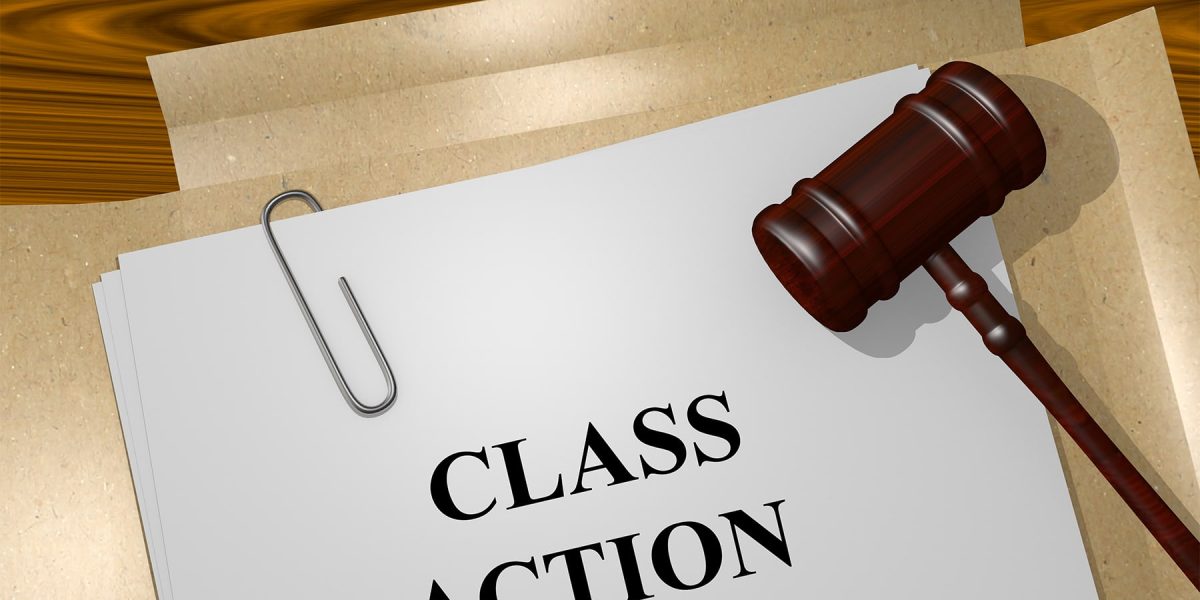Archer-Daniels-Midland Class Action Lawsuit: Your Legal Roadmap
Wiki Article
Taking Legal Activity: Insight Into Course Action Suits
Recognizing the intricacies of class action suits is necessary for anyone thinking about taking lawful action, as it includes different facets such as benefits, difficulties, and the actions involved in starting such a lawsuit. In this discussion, we will explore the understanding into class action legal actions, dropping light on the variables that individuals must think about prior to signing up with one.Understanding Course Activity Lawsuits
Course activity legal actions are a lawful system that enables a team of people with comparable cases versus a defendant to collectively seek payment or various other legal solutions. Assertio class action lawsuit. When a huge number of individuals have been impacted by the very same injury or misdeed, this kind of lawsuit is generally used. Instead of each individual bringing a different suit, a class action legal action enables all affected celebrations to settle their cases into a single legal actionOne trick advantage of course action lawsuits is that they give accessibility to justice for individuals who might not have the sources or knowledge to pursue their claims individually. By signing up with forces with others that have comparable complaints, plaintiffs can pool their sources and enhance their opportunities of success. Furthermore, class activity lawsuits promote effectiveness by simplifying the legal process and avoiding multiple identical claims from blocking the courts.
To launch a course activity lawsuit, one or more individuals have to function as course reps and file a grievance in support of the whole course. The court then figures out whether the suit satisfies the requirements for course certification, including the following criteria: numerosity (an adequately multitude of complainants), commonness (typical questions of regulation or fact), typicality (the claims of the class agents are typical of the course), and competence of representation (the course representatives will appropriately stand for the rate of interests of the class) It will notify prospective course participants who can after that choose to take part or opt-out. if the court certifies the course.
Advantages of Pursuing a Class Action Claim
Going after a course action claim provides individuals the possibility to collectively seek settlement or legal treatments for common complaints versus an offender. This type of legal activity gives several advantages to plaintiffs, making it an eye-catching choice in certain situations.Among the key benefits of going after a course activity lawsuit is the ability to pool sources and share the costs related to litigation. Legal procedures can be pricey, entailing charges for lawyers, specialist witnesses, and court-related expenses. By joining forces with various other individuals who have similar insurance claims, plaintiffs can share these prices and decrease the economic burden on each person.
Additionally, course activity suits advertise effectiveness in the lawful system. Instead of numerous individuals submitting different claims versus the exact same offender, a course activity legal action settles these claims into one situation. This not just conserves time and sources for the court but also improves the process for the plaintiffs.
In addition, class activity claims supply a platform for individuals to have their voices listened to. By joining with each other, plaintiffs can magnify their grievances and boost the chance of attaining a beneficial end result. Archer-Daniels-Midland class action lawsuit. This cumulative strength can additionally tax accuseds to attend to the underlying concerns and make required adjustments to avoid comparable harm in the future
Difficulties in Class Activity Lawsuits
Among the essential considerations in class activity lawsuits is the complexity of handling a big group of complainants with varied interests and scenarios. This presents a number of obstacles that can make the procedure much more hard and taxing. One challenge is the trouble of providing and getting evidence that sustains the cases of all the plaintiffs. Each private complainant might have different proof to sustain their case, and it can be challenging to provide this proof and collect in a natural and convincing fashion.Class action legal actions commonly include a huge number of individuals who may have various goals and priorities. Balancing these diverse rate of interests can be a considerable difficulty for attorneys standing for the class.
Additionally, there may be challenges in terms of determining the proper amount of problems to be awarded. In course action suits, damages are normally awarded based upon the average damage suffered by the whole class. However, calculating this average damage can be complicated, as it needs establishing the extent of harm endured by each individual complainant and accumulating these problems.
Actions to Launch a Course Activity Lawsuit
To initiate a course activity suit, the initial step is to determine a legitimate lawful case that influences a group of individuals who have suffered comparable damage or injury. This insurance claim must be based on an offense of a legal obligation, such as negligence, fraudulence, or violation of contract. As soon as the insurance claim has been recognized, the next step is to collect proof to sustain the claim. This might include accumulating documents, performing meetings, and consulting experts in the appropriate field.
After collecting the required proof, the following step is to locate a representative complainant, also referred to as the course agent, that will certainly act upon part of the entire course. The class representative must have a strong claim and want to bear the responsibility of representing the interests of the entire class.
As soon as the depictive complainant has been official website determined, the next action is to submit a complaint with the court. The grievance ought to consist of an in-depth description of the claims, the injury experienced by the class participants, and the alleviation looked for. It is necessary to comply with all procedural requirements and deadlines established by the court.
After the issue has been submitted, the court will certainly examine it and establish whether the situation can continue as a class activity. The court will certainly take into consideration variables such as the size of the course, the typical legal concerns, and the competence of the representative plaintiff. If the court approves the course action, it will certainly inform the class members and allow them to opt-out if they wish to seek their very own specific insurance claims.
Factors to Take Into Consideration Prior To Signing Up With a Class Activity Suit
Prior to determining to sign up with a course activity legal action, people need to very carefully assess a number of elements to identify if it is the right strategy for them. While course action suits can offer a chance for individuals to look for justice and payment for damage brought on by a common entity or item, there are particular factors to consider that need to be taken right into account.One aspect to consider is the toughness of the instance. It is very important to evaluate the benefits of the legal action and figure out if there suffices evidence to sustain the insurance claims being made. This entails reviewing the legal debates, gathering appropriate facts, and talking to attorneys to assess the opportunities of success.
Another crucial aspect is the prospective recuperation. If the lawsuit is effective, people must analyze the potential monetary compensation they may obtain. This can entail approximating the problems experienced and thinking about the expenses and time associated with seeking the claim.
Additionally, people ought to consider the possible dangers and downsides of joining a class activity legal action. This can include the opportunity of a prolonged lawful process, the unpredictability of the end result, and the potential for limited control over the proceedings.
Lastly, individuals need to likewise examine their individual situations and top priorities. Elements such as monetary resources, time dedication, and psychological toll needs to be thought about prior to making a decision to sign up with a course action legal action.

Conclusion
Finally, class action suits give people with the possibility to look for justice and payment for harm brought on by an usual defendant. While they provide benefits such as efficiency and cost-effectiveness, challenges such as intricate lawsuits procedures and prospective problems of interest need to be taken into consideration. Before joining a course activity claim, individuals must carefully weigh the variables and speak with attorneys to make an informed decision.
In course activity legal actions, problems are typically granted based on the average harm suffered by the whole class (Future FinTech class action lawsuit). If the court approves the class action, it will alert the class members and permit them to opt-out if they desire to seek their own private cases
Report this wiki page